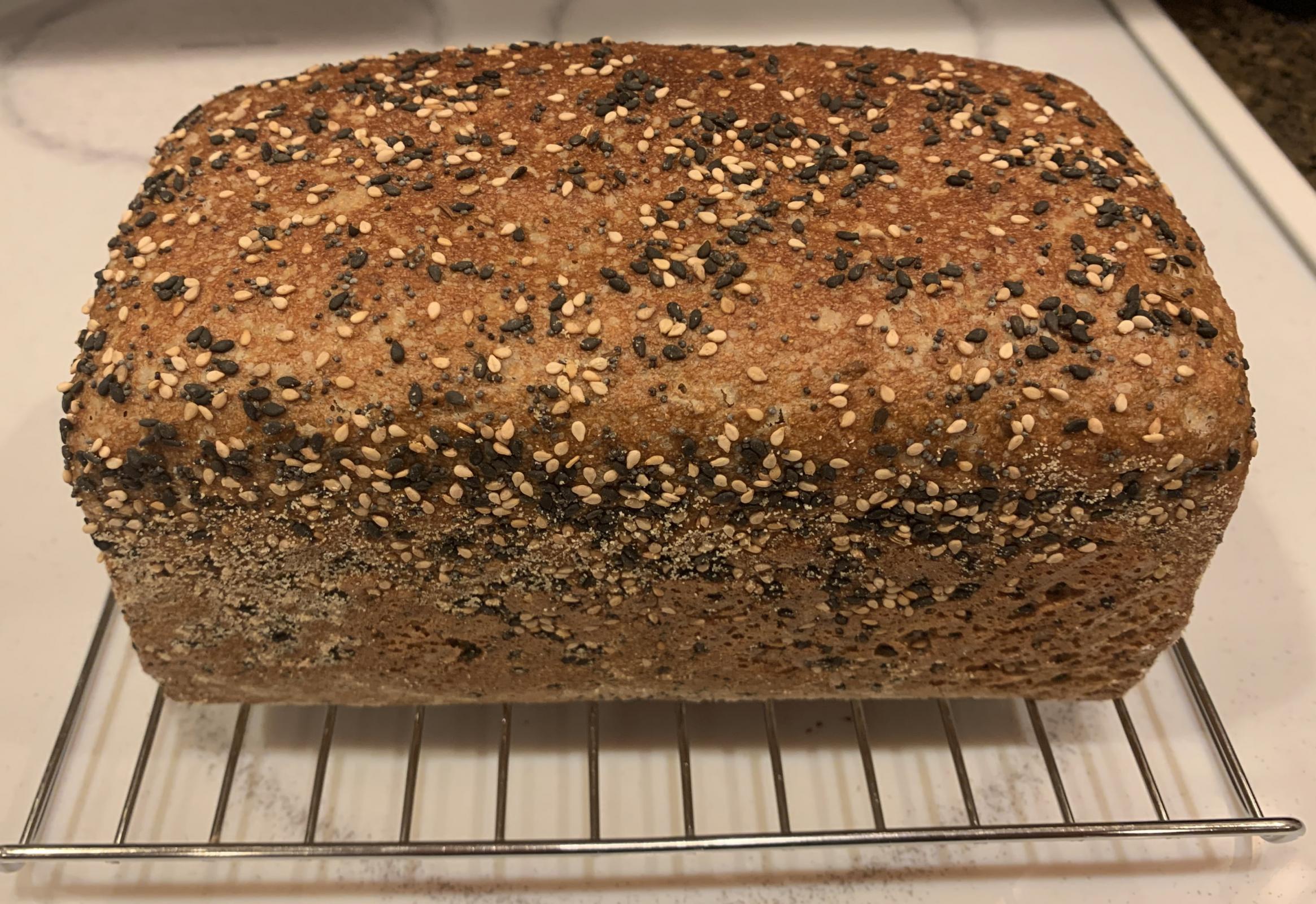I've been on a bit of a whole grain kick lately, and after a brief back and forth with Dave, I decided to give his 97th Bake a try. Let the fun begin!
I converted his recipe to my standard 450g flour, and other than a few deviations, I followed his method as outlined in his post. My only deviations... I didn't have hard white wheat, so I substituted with hard red. I didn't have whole coriander or time to toast the spices, so I used 2.5g ground coriander, 3.5g fennel seed, and 3.5g caraway seed. I didn't have time to grind the flaxseed or chia seed, and based on Dave's observations about the bread drying out, I made a soaker with the flax/chia seeds using 150% boiling water. Finally, I skipped the chia seeds in the topcoat.
While weighing out the ingredients, I thought the bread spice mix would be overpowering, but it doesn't appear so on the baked bread. The fennel is definitely noticeable, but it doesn't seem over the top. Looking forward to the taste test tomorrow!
At mixing, I made a rookie mistake #1... I followed Dave's hydration verbatim and didn't contemplate the differences in our flours. I used a blend of Glenn, Red Fife, Turkey Red, and Warthog from Janie's Mill. It was great after the saltolyse, but the additional hydration with both leavening sources plus the soaker put it over the top. The dough was extemely slack and sticky. Rookie mistake #2... I was stubborn and thought I could work the hydration into the dough. A couple of tablespoons of flour would have gone a long way... During folds, the dough would start to firm up and lose its stickiness but would go slack and get sticky by the next fold. If I hadn't ground the grain myself, I would have bet good money that this was an 80% rye bread instead of 20%. Next time... I'll start at 73-75% hydration and bassinage in extra hydration as needed.
Shaping was "interesting"... I did my best to handle it with a little extra flour. Couldn't get any strength into it with folds. Finally had to get a little tension into it by using my bench scraper and shaping a boule for about 10-12 quarter turns. It was just enough to wet the surface and roll the dough through the seeds for the top coat. Flopped the dough into the Pullman and crossed my fingers.
The dough was so slack, I didn't trust the poke test. So, I let it go in final proof until I had a good rise and always watching for pin holes in the surface. After 3.25 hours, it to was within an inch of the lip and hadn't formed a pin hole. I didn't want to push it any further and moved to baking.
The bread has a nice aroma and formed a crisp (but not thick) crust. Even though I didn't get a pin hole, I think it overproofed and I'll have caverns under the top crust. That said, it smells really good and can't wait till breakfast!




